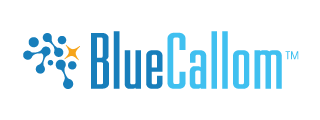What means ‘Enterprise AI Ready’?
Agentic AI in your small, medium, or large enterprise needs some dedicated considerations.
Where would you start?
How would you start?
Would you need a strategy?
Unfortunately, most people start with meetings, thinking about how to do it, searching for use cases, and then start experimenting. Starting AI with AI seems not very obvious.
Enterprise AI Readiness Check
1. Understand the full scope of Enterprise AI
- Agentic Enterprise AI is the biggest paradigm shift in human history. Homo sapiens understood that specialization is a natural key to success. Leadership split in Experts and Generalist, whereas technology was something for experts. AI is not a technology but “Artificial Intelligence”, which the C-Level needs to be fully aware of.
- It’s like hiring aliens from a more developed culture. The leadership team must know how to harness its power to maximize its leverage.
2. Define Business Opportunities
-
Explore your Operational Excellence Goals:
Identify which of your operational Excellence challenges are most critical and focus on AI solutions that can help address them. By far, the best start is with AI by letting AI help you identify weaknesses, their root causes, and determine where to start. -
Assess before you strategize:
It’s nearly impossible to develop a strong AI Strategy without the experience of what it can do for you. Therefore, don’t worry about an in-depth strategy and see how AI works with some of your more challenging goals.
3. Assess Data Readiness
-
Evaluate data quality:
AI models require high-quality data. This doesn’t mean you need to clean up your data, but consider ways to use your existing data through intelligent systems intelligently. -
Establish data infrastructure:
Develop a robust data infrastructure for secure collection, storage, and processing of data in compliance with relevant regulations.
4. Build a Skilled Agentic IT Team
-
Assemble a multidisciplinary team:Recruit individuals with expertise in data science, machine learning, and business domain knowledge.
-
Foster a continuous learning model:Encourage a culture of continuous learning and cooperation to keep team members up-to-date. The rapid development of AI is not just about AI itself, but also about all technologies, operations, and commercial aspects that will evolve faster than ever through AI.
5. Choose the Right Technology and Infrastructure
-
Select appropriate solutions:
Choose AI solutions that give you the strategic edge you are looking for. Consider integrated and cross-functional solutions and avoid isolated tools and features. Always keep in mind that you will sooner or later add all employees, current and future, to the Enterprise AI Structure.
- Ensure infrastructure scalability:
Select solutions that provide the necessary infrastructure to support enterprise-wide deployment, reporting, and management capabilities
-
Explore Networking Capabilities:
To begin with, focus on smaller groups and your own employees. And once you experience the significance of Enterprise AI Solutions, you will most likely want to integrate business partners, suppliers, customers and other external stakeholders to your Enterprise AI Network of functionality.
6. Start with Pilot Projects
-
Test and validate:
Begin with small-scale pilot projects or proofs of concept to demonstrate AI’s impact and gather insights.
-
Iron out issues:Use pilot projects to identify and resolve any technical or operational challenges before a broader rollout.
7. Develop an Enterprise AI Implementation Strategy
-
Ensure seamless integration:
Work to integrate AI technologies and insights into existing business processes, complementing rather than disrupting operations. -
Automate and enhance:
Leverage AI to automate tasks and enhance decision-making processes across the organization.
8. Enterprise AI Implementation
- Launch your Enterprise AI initiatives in selected departments and let other departments express their interest. This is not the time to dictate who and where to implement it. Let the internal advocates share their excitement with others.
- Learn from each step and improve the launch process. Then involve other business units and country operations.
- Build a sounding board with representatives from all participating business groups.
- Try to complete the enterprise-wide implementation within two years.
9. Establish Governance and Ethics
-
Implement strong governance:
Develop robust data governance frameworks that cover data quality, security, access, and compliance with regulations like GDPR and EU AI Act. -
Prioritize responsible AI:Emphasize ethics and responsible use of AI throughout the development and deployment phases.
10. Measure, Monitor, and Optimize
-
Define measurable goals of the project:
For instance: productivity, adaptation, employee satisfaction, and the impact of specific implementation aspects. Set clear, measurable KPIs -
Monitor results weekly:
Set short monitoring intervals to steer and maneuver the implementation in a timely fashion.
- Optimize your results:
Optimizing AI solutions based on real-time feedback and evolving business needs.
Agentic AI in your small, medium, or large enterprise needs some dedicated considerations.
Where would you start?
How would you start?
Would you need a strategy?
Unfortunately, most people start with meetings, thinking about how to do it, searching for use cases, and then start experimenting. Starting AI with AI seems not very obvious.

